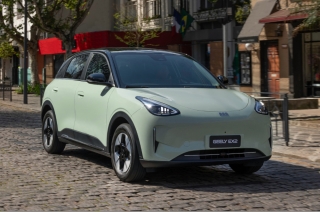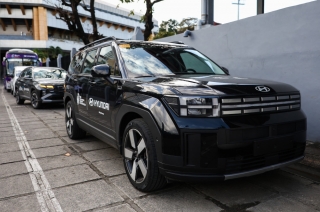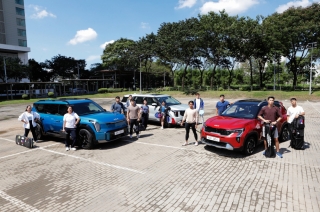
Volkswagen has laid out their aces in the mission to transform their company in the next decade and beyond. Their strategy includes clearer brand positioning in various regions and segments; improved efficiency and productivity; and huge investments in e-mobility and connectivity.
Dr. Herbert Diess, Chairman of the Volkswagen brand Board of Management, said that they are very ambitious with their goals. He also said the changes will be radical and “very few things will stay as they are.”
Their new global vision is “Volkswagen: Moving People Forward.”
The TRANSFORM 2025+ of the Volkswagen brand will go in 3 phases: Phase 1 will involve restructuring of their core business until 2020; Phase 2 intends to put VW as a leader in e-mobility up to 2025, and create a broader earnings base through new mobility services; and finally, Phase 3’s objective is to achieve a lead role in mobility by 2030.
One of the most notable changes that will take place is the German marque’s shift in focus when it comes to the segment produced per region. In North America, they want to shift from the niche supplier to a more relevant producer. SUVs and limousines will be their primary focus, while production of electric cars will follow in Phase 2.
On the other hand, VW plans to further strengthen their position in China through SUV and electric vehicles. They will also start investing in the smaller car segment, which will also happen in other major markets such as South America, India, and Russia.
With the improving trend in electric cars, Volkswagen intends to capitalize in this technology through aggressive e-mobility offensive. They are looking to sell a million electric cars by 2025, with future electric cars as Volkswagen’s new trademark.
Moreover, the German brand will develop its own digital platform. Aside from inching closer to their customers, this approach will mean more profit for VW through services that they can exclusively provide. This will also mean a digital ecosystem for the expected 80 million active users all over the world.
Lastly, the TRANSFORM 2025+ is aiming for an increase in sales revenue through lower costs. The operating margin is expected to double from about 2% in 2015 to 4% by 2020, with a further increase to 6% by 2025. Further improvements are aimed for beyond the year 2025.
For more information about Volkswagen and its vehicles, visit the AutoDeal Car Brands page.
Latest News
-
Geely’s EX2 EV headed to Australia — is a Philippine launch possible? / News
The Geely EX2 is confirmed to go on sale in Australia in 2026. Could a launch in the Philippines also be on the cards?
-
Hyundai Motor Philippines is the FIFA Futsal Women's Teams' official mobility partner / News
Hyundai Motor Philippines strengthened its partnership with FIFA through its support of the FIFA Futsal Women's Teams.
-
Kia Philippines backs EJ Obiena as Atletang Ayala continues championing Filipino athletes / News
Kia Philippines strengthens its support for EJ Obiena, backing the Olympian with dedicated mobility at home and abroad.
Popular Articles
-
Electric Vehicles in the Philippines for under P1 million
Jerome Tresvalles · Aug 19, 2025
-
Top 3 Cars For Every Lifestyle—What Cars Are Right For You? | Behind a Desk
Caco Tirona · Apr 24, 2024
-
5 Tips to Maximize Fuel Efficiency
Jerome Tresvalles · Sep 09, 2024
-
Five driving habits that are draining your fuel tank
Jerome Tresvalles · Jun 24, 2025
-
Can engine braking harm your engine?
Jerome Tresvalles · Sep 11, 2025
-
Do electric cars even need maintenance?
Jerome Tresvalles · Oct 23, 2024
-
Best vehicles for an active outdoor lifestyle
Shaynah Miranda · Jul 25, 2024
-
How to drive different types of vehicle transmissions
May 23, 2024
-
5 easy ways to keep your car interior clean
Allysa Mae Zulueta · Nov 15, 2021
-
How to survive Metro Manila traffic
Earl Lee · Aug 16, 2022



